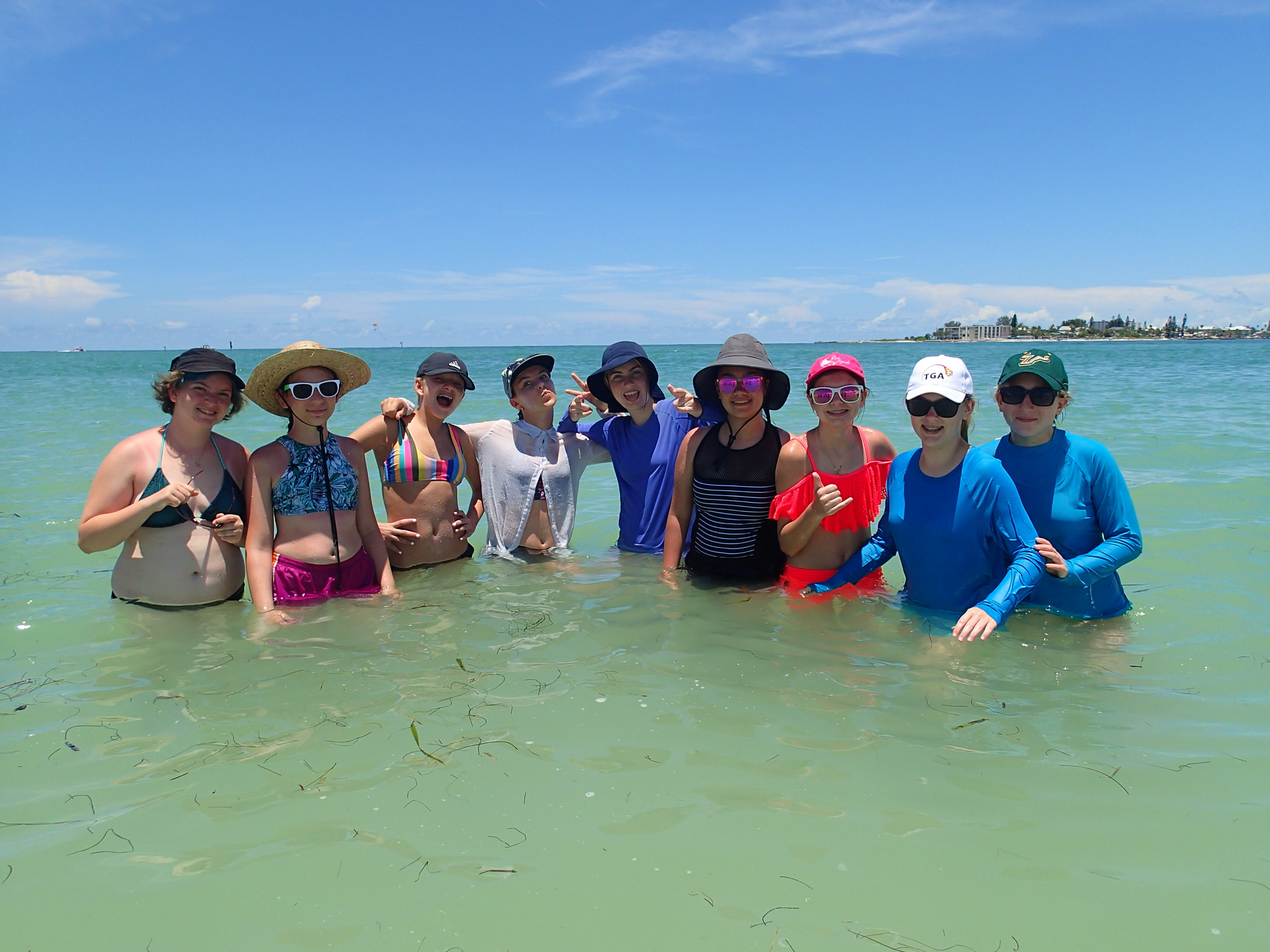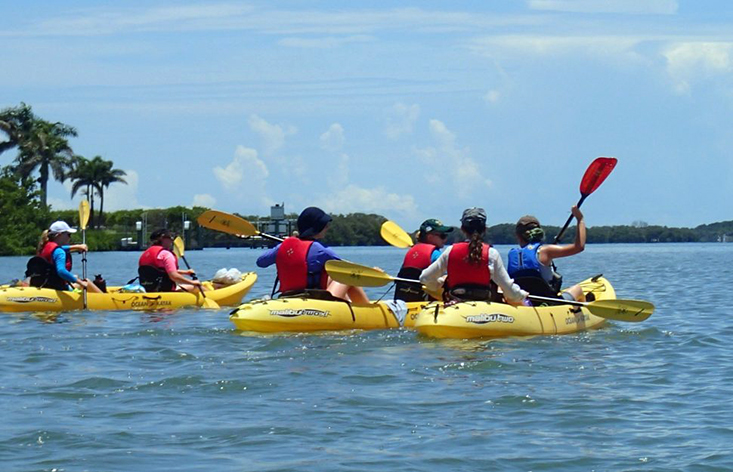This post was contributed by science mentors Alex Burns and Dr. Marcy Cockrell.
This week, we took campers to several field locations to learn about the oceans. On our trip, we kayaked to the preserve on Shell Key. Shell Key is a bird sanctuary and nature preserve between Ft. DeSoto north beach and the south end of Pass-a-Grille beach. Every day it was evident the girls were excited to learn and they were engaged during the camp activities and clean up! The day started with learning about gastropods (snails) and bivalves (clams) and how to identify shell structures. Ask your girls about the umbo and operculum of shelled animals! The girls also learned about the importance of conserving shells on the beach — for sand production and conservation of our Florida beaches.
Once on our way, the girls worked as a team to launch the kayaks out to the beach. We had about a 30 minute kayak to reach Shell Key from the launch site. Upon landing, we had the girls find a shell and describe it. We then challenged them to identify their shell from a pile with their eyes closed. We followed this with a walk to identify the wildlife and shells along the beach in groups. We also used this walk as an opportunity to pick up any trash and marine debris we found, teaching the campers to be good stewards of the environment and leaving the preserve better than we found it.

The girls quickly picked up on using shell and animal identification guides and thinking about how scientists record the density of animals present. Among the live animals we saw were Florida Fighting Conchs, Lightning Whelk, horseshoe crabs (many of which were mating!), pelicans, dolphins, a juvenile Bonnethead shark, snook (a type of fish), ghost crab holes, and gulls looking for snacks. We were also followed closely on the kayak route by many curious and hungry cormorants (a marine bird), as we paddled through the seagrass. The trip ended with everyone sharing facts they learned from the day about the shells and the organisms that inhabit them. The campers also learned the OCG camp song on this trip, and at the end of the long day, the echo of songs could be heard as we kayaked back.
